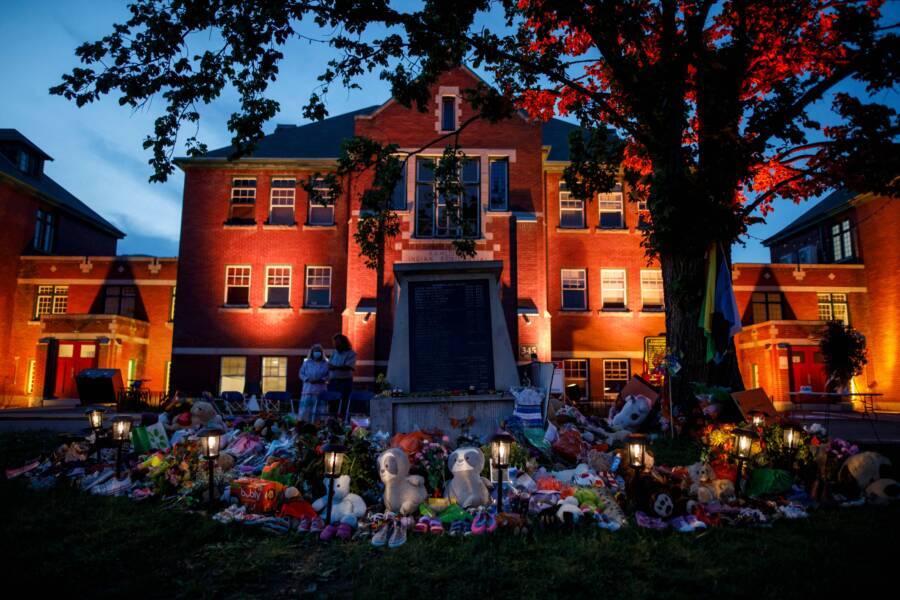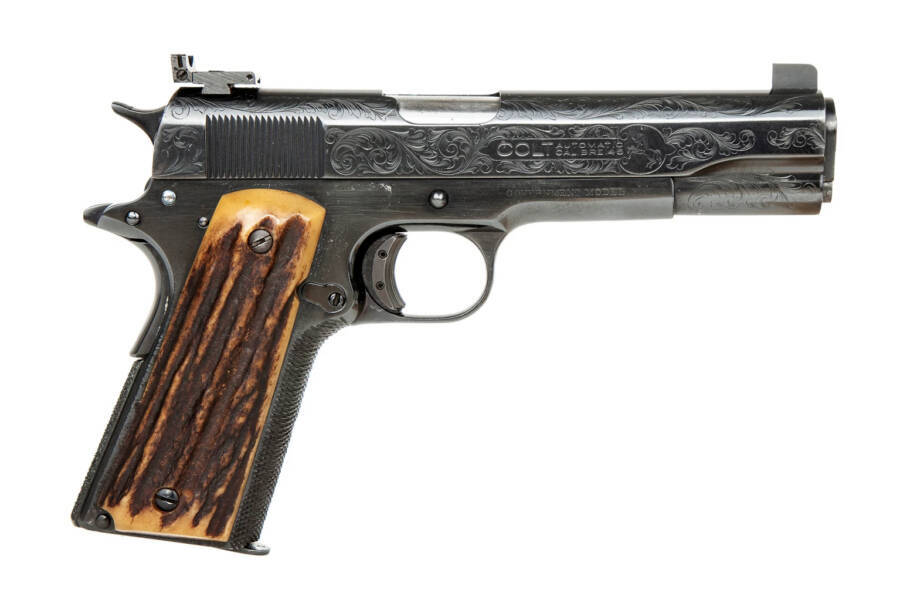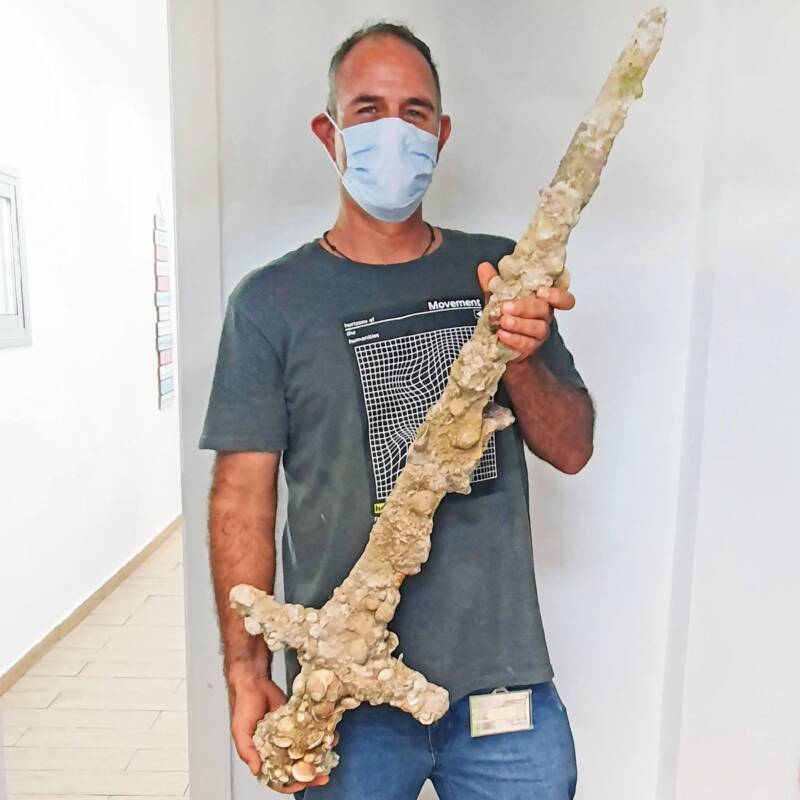Hundreds Of Indigenous Children’s Remains Found At A Canadian Boarding School

Cole Burston/AFP via Getty ImagesA memorial at Kamloops for the missing children.
For decades, indigenous children in Canada were removed from their homes and forced into boarding schools. Many never came home. This year, the Tk’emlúps te Secwépemc Nation discovered why.
After searching the grounds of the defunct Kamloops Indian Residential School in British Columbia with ground-penetrating radar in May, tribal members found 215 small bodies. Some of the remains, they said, were as young as three years old.
“We had a knowing in our community that we were able to verify,” Tk’emlúps te Secwépemc Chief Rosanne Casimir said. “At this time, we have more questions than answers.”
Between 1883 and 1996, some 150,000 indigenous children were forced into boarding schools. Survivors have long described an atmosphere of fear and abuse.
“We were told we were ugly. We were made to feel like we were nothing but dirt,” said Garry Gottfriedson, a survivor of Kamloops. He also recalled that sometimes students simply “disappeared.”
The discovery at Kamloops has forced a reckoning in Canada. There, indigenous activists have encouraged additional searches of other school grounds. The movement has also crossed to the United States, which has its own dark history of indigenous boarding schools.
By some estimates, there may be 40,000 unmarked graves in the United States.
Al Capone’s Favorite Gun Sells At Auction

Witherell’sAl Capone’s semi-automatic, .45-caliber pistol was put up for auction along with 173 other items belonging to the infamous gangster.
The notorious gangster Al Capone left a bloody legacy. He also left a number of items behind when he died in 1947, including letters, photos, and a gun that his granddaughters auctioned off this year.
“His granddaughter referred to it as his favorite pistol,” said Brian Witherell, the co-founder of Witherell’s Auction House, of the semi-automatic 0.45 caliber pistol. “He probably used it as a defense gun. As the most shot-at man in history, he would be inclined to have one to have some protection.”
Other Capone artifacts on the auction block in October included diamond-encrusted jewelry with the gangster’s initials, home movies, heartfelt letters to his son, Sonny, his pocket watch, and the last photo of Capone ever taken alive.
According to Witherell, the items were especially valuable because of the family’s involvement. “They are offered directly from the family descendants, who are signing documents for each lot to attest its provenance,” he explained.
The pistol sold for $1,040,600. Other items in the Al Capone auction — which totaled 174 items in total — sold for $3.1 million, far more than the $700,000 Capone’s granddaughters expected.
Diver In The Mediterranean Happens Upon A Sword From The Crusades

Nir Disteleld/Israel Antiquities AuthorityShlomi Katzin with the sword he discovered.
Some 900 years ago, a warrior in the Crusades lost his sword in the Mediterranean sea. Then this October, an Israeli diver spotted it on the ocean floor and brought it to the surface.
The diver, Shlomi Katzin, then turned the sword over to the Israel Antiquities Authority (IAA) as required by Israeli law.
“It’s normal to find swords in bad condition, but this one was found under the water — and under the water, it was preserved in very good condition,” explained Jacob Sharvit, the director of the marine archaeology unit at the Israel Antiquities Authority (IAA).
“It’s the first time that we found a beautiful sword like this.”
Officials with the IAA then examined the sword. They determined that it dated back some 900 years and was likely wielded by a soldier during the Crusades.
Specifically, the sword seems to date from the Third Crusade (which lasted from 1187 to 1192). Because only Christians came from the sea at that point, and Muslims fought from land, experts believe it belonged to a Crusader.
“It is exciting to encounter such a personal object,” said Nir Distelfeld, an IAA official, “taking you 900 years back in time to a different era, with knights, armor, and swords.”
After checking out the best history news stories of 2021, discover 35 history maps that will change how you see the world. Then, peruse this collection of famous last words from history’s greats.





